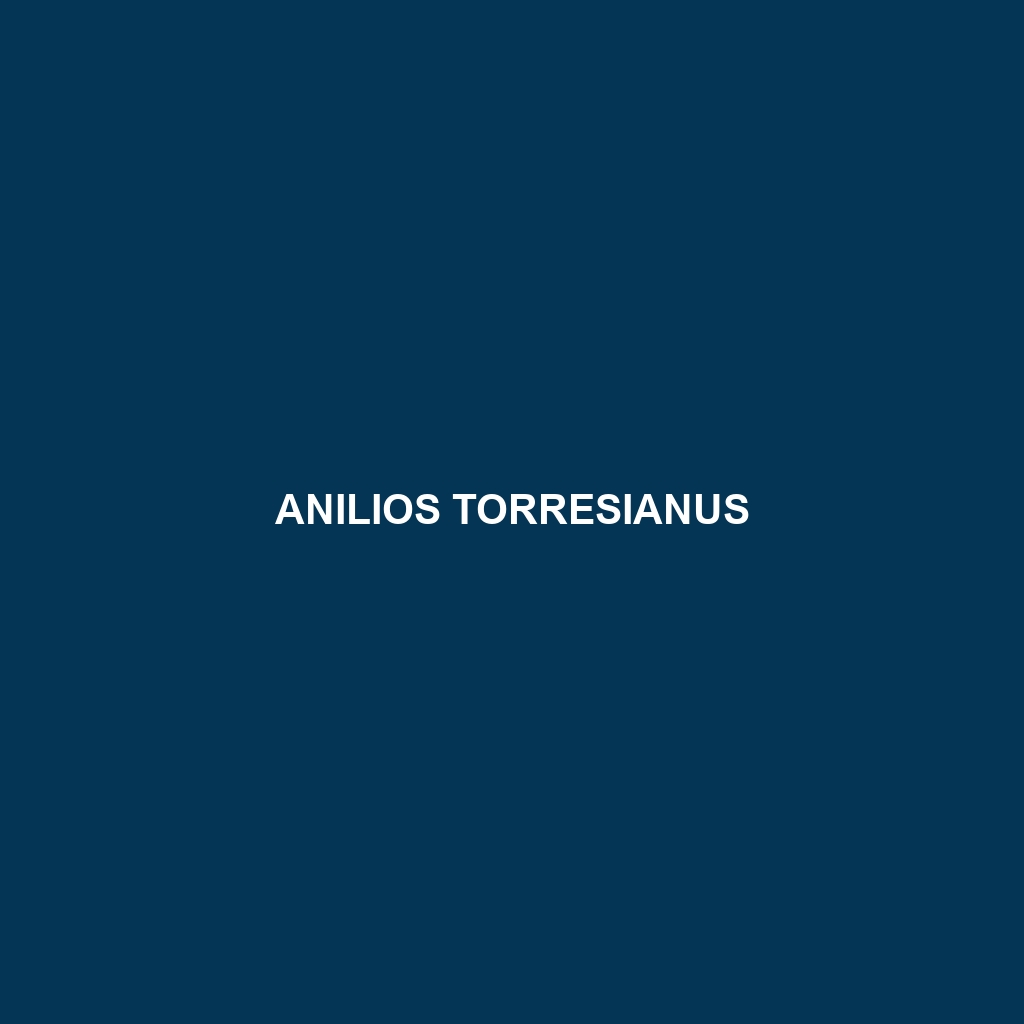Anilios torresianus – Species Description
Common Name: Anilios torresianus
Scientific Name: Anilios torresianus
Habitat
Anilios torresianus, commonly known as the Torresian blind snake, predominantly inhabits tropical and subtropical regions of northeastern Australia and parts of New Guinea. This species is usually found in moist environments, such as rainforests, woodlands, and grasslands, where the soil is rich in organic matter. They prefer areas with ample leaf litter and underground burrows, which provide essential shelter and humidity.
Physical Characteristics
The Torresian blind snake typically reaches lengths of 30 to 50 centimeters (about 12 to 20 inches). It exhibits a smooth, elongated body that is generally colored in shades of brown, grey, or tan, often adorned with subtle banding that aids in camouflage within the leaf litter. Its small head is not easily distinguishable from the neck, while its eyes are rudimentary and covered by scales, emphasizing its subterranean lifestyle.
Behavior
Anilios torresianus is primarily fossorial, spending much of its life underground. It is a nocturnal creature, actively foraging at night while remaining hidden from predators during the day. This species is known for its gentle demeanor and is non-venomous, relying on a strategy of burrowing into the soil to escape threats. Additionally, it exhibits unique behaviors such as remaining motionless when disturbed, enhancing its chances of avoiding predation.
Diet
The diet of Anilios torresianus mainly consists of small invertebrates, particularly ants and termites. This snake employs its specialized feeding habits to consume its prey whole, often searching for food among decaying vegetation where these insects are abundant. Its role as a predator of these small creatures is significant in controlling their populations within its habitat.
Reproduction
Anilios torresianus has a breeding season that typically occurs during the warmer months, where males engage in courtship displays to attract females. The species is ovoviviparous, giving birth to live young instead of laying eggs. The average litter size can range from 5 to 15 offspring. Upon birth, the young are already independent and capable of fending for themselves, a behavior that enhances their survival in the wild.
Conservation Status
The conservation status of Anilios torresianus is currently not classified as threatened; however, it faces potential habitat loss due to deforestation and urbanization. Continued monitoring of its population dynamics is necessary to ensure that this species remains stable in its environment.
Interesting Facts
One fascinating aspect of Anilios torresianus is its remarkable ability to detect vibrations in the soil, which aids in locating prey. Additionally, this species is often mistakenly identified as a type of earthworm due to its cylindrical shape and burrowing habits.
Role in Ecosystem
Anilios torresianus plays a crucial role in its ecosystem by helping maintain the balance of small invertebrate populations. As a predator, it contributes to the regulation of ant and termite numbers, which can affect soil health and plant life. This interaction showcases the interconnected nature of food webs within its environmental context.
